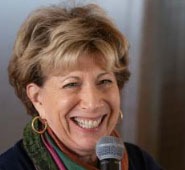I have attended and participated in numerous panel discussions, presentations, conversations and webinars. I have read hundreds of articles about measuring diversity, equity, and inclusion. Invariably, the metrics presented are based on such things as the number of hires and promotions, training programs, employee or business resource groups and to salary audits. However, they reflect diversity and equity; they say nothing about the state of inclusion. While it is recognized as an important part of the equation, inclusion is a word without dimensionality.
What is inclusion?
Inclusion is an abstract noun; an intangible concept such as an emotion, feeling or idea which is difficult to measure. This is the problem. Inclusion is perceptual – “Everyone working here has an equal voice.” “The company has a reputation for being an inclusive workplace.” Perception, according to psychology, is a cognitive function. It is how we see and interpret external events, our attitudes or inclinations, and the way we make decisions. It is a mindset.
To have an inclusive mindset means having a commitment to promote equal opportunities for everyone. They must have the ability to be heard, to grow, develop, advance and succeed.
Traditional approaches to building a diverse, equitable and inclusive workplace often result in resistance and/or push‐back. An inclusive mindset is a set of relatable actions that many people aspire to achieve in their daily lives.
Mindset development includes:
- Respecting and learning from others – everyone has a valid perspective and rich experiences that add depth to a conversation or solution.
- Being open to new ideas and possibilities – innovation stems from a multiplicity of viewpoints and experiences.
- Asking questions – complete information eliminates assumptions that can lead to misunderstandings or limited solutions.
- Demonstrating kindness, understanding, and empathy – builds trust and loyalty.
- Listening more; talking less – fosters engagement and provides additional information leading to a robust solution.
When an organization’s culture centers on an inclusive mindset, diversity and equity become an integral part of its DNA by default. The values integrate into every system, conversation, meeting and interaction. As with tracking the diversity and equity metrics, having a baseline that measures changes in employee perception ensures that the DNA remains healthy.
About Julia Geisman
Over the last 30 years, Julia Geisman laser-focused on the people side of business to increase individual, team and organizational success. For the last 15 years, she has been attacking the root causes of workplace inequities concentrating on inclusion.
CareerAgility, the company Geisman founded, shows organizations how to build and sustain inclusive work environments. Their comprehensive approach measures the processes and systems required for creating a company culture in which everyone has an equal voice as well as development and advancement opportunities. She wrote a series of career advancement ebooks and numerous articles on inclusion and diversity. Currently, Geisman is working on a chapter on the hidden costs of exclusion for a compilation book scheduled for release in Fall 2021.
Geisman has been a panelist and speaker at national and international conferences, has conducted hundreds of workshops and webinars, been a coach and trusted advisor to senior executives, and is actively engaged in organizations promoting inclusion and equity. Her strengths come from her ability to provoke new thinking and her sense of humor.
Follow her on LinkedIn, Twitter, and Facebook







Add Comment